#bi plus
Text
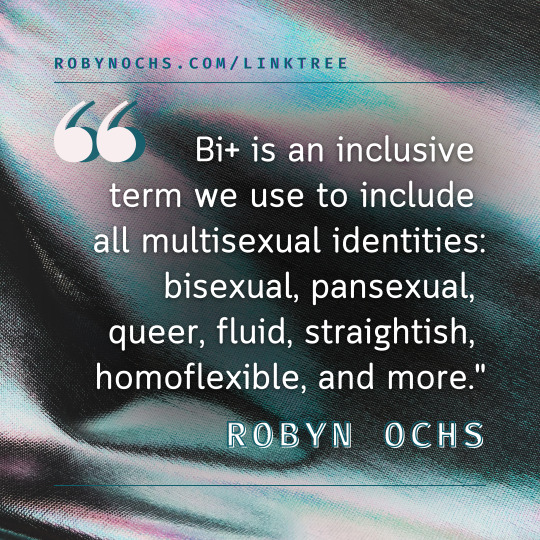
[ID: Text on a multicolor background: '"Bi+ is an inclusive term we use to include all multisexual identities: bisexual, pansexual, queer, fluid, straightish, homoflexible, and more.” -Robyn Ochs.' 'robynochs.com/linktree' is written at the top.]
"Bi+ is an inclusive term we use to include all multisexual identities: bisexual, pansexual, queer, fluid, straightish, homoflexible, and more.” -Robyn Ochs
36 notes
·
View notes
Text
I love you bis <3!
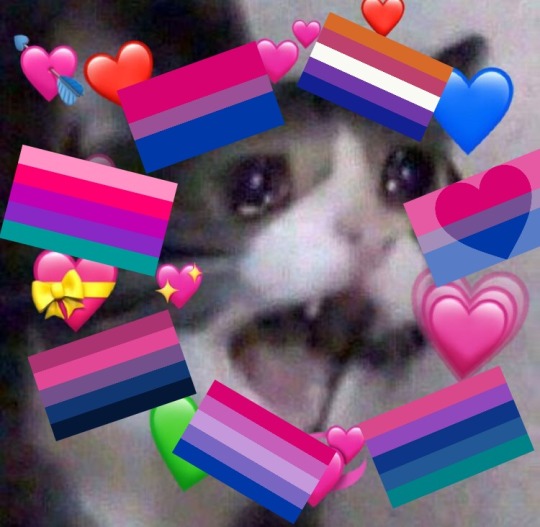
#bi positivity#bisexual#biromantic#bi lesbian#bi gay#bi straight#bi dyke#bi fag#bi queer#bi umbrella#bi plus
162 notes
·
View notes
Text

It is 2018 and I am sitting in the Neptune Theatre, Halifax, Canada. I’m watching the Canadian premiere of the musical theatre adaptation of The Color Purple directed by Kimberley Rampersad—the first time the show has been directed by a black woman. It is also the first-ever positive representation of my own sexuality that I have been able to witness in the form that I have spent almost two decades studying, researching, and writing about: musical theatre. As I watch the character of Shrug Avery (Karen Burthwright) delight in the fluidity of her own sexual desire, a desire above and beyond gender, it feels like a space has been made. I’m crying but it’s complicated. Joy? Sadness? Recognition?
I am writing from the perspective of a bisexual+ cis-gendered white British woman, so it is important to note the many kinds of privilege that shape the experiences I am talking about, especially when addressing this musical. The Color Purple (2005) is especially important in the space it makes for PoC, and women of color. This has been written about both in reference to the musical (Edney; Lovelock) and the novel (Bealer), and by Alice Walker herself. For me, it is the first time I have seen what it is to be bisexual on a stage, while I recognize this musical does many more important things than that in connection to race and sexuality. Its powerful story makes ripples.
***
In June 2000, about a month after I finished my secondary education in a small school in mid-Wales, the infamous “Section 28” (a British law that banned the “promotion” of homosexuality, introduced by Margaret Thatcher in 1988) was repealed, first in Scotland and three years later in the rest of the UK. I would like to say I remember this event, but I don’t. If I even knew about it at the time, it would have been because my parents’ copy of the Daily Mail was “Cross and Appalled.” It was almost always cross and/or appalled, though, so it doesn’t stick out in my memory. I don’t even remember when I first heard the word bisexuality. It certainly wouldn’t have been at school, because Section 28 had made it illegal for schools to discuss LGBTQ+ lifestyles, as it would risk promoting them. The teaching of the “acceptability of homosexuality” was explicitly forbidden by Section 28 from 1988 to 2000, while bisexuality was not even mentioned (UK Local Government Act 1988).
Even in my early twenties, when I joined a dating site and ticked the box “interested in men and women,” I still didn’t really identify as bisexual because I don’t think I even understood that was ever an option for me. Bisexuals were the people who hadn’t made up their minds . . . right? And then to cap it all off, I fell in love with a man who I married within a year of meeting, so I had to hand in my badge of not quite knowing how I fitted in. Some fifteen years later I am still married to him, and my relationship has given me huge amounts of privilege (we could get married; when and if I’d have fallen in love with a woman at the same time we would have to have waited until
2014 to do the same; if I’d have fallen in love with a nonbinary person, we still could not in a way that recognized both of our gender identities). But despite these many privileges that I have clearly benefited from, my innate queerness did not simply go away.
***
Late June 2016. I am at the Circle in the Square Theatre, New York City, watching Beth Malone and Michael Cerveris in Fun Home play the characters of Alison Bechdel and her father in a car. The mass murder at Pulse Nightclub, an LGBTQ+ hate crime targeted at the Latinx community, had taken place on June 12th. Everything hangs heavy in the air. That week I had stood behind a cordon, watching the Pride march being led by elders in the community, carrying photographs of the forty-nine victims. Like many of the queer people in the audience of Fun Home, I cried, heaving sobs. When the house lights come back on the theatre is full of red-eyed people who get it, nodding in encouragement.
***
It is September 2016 and I now try to acknowledge my queerness in front of students when studying representations of sexuality in musical theatre. I hear myself say, “I’m speaking as a bisexual woman.” After one of these classes a student excitedly approaches me and says, “You’re the first ever bi grown-up I’ve ever met in real life!” All of this matters and it keeps mattering. I was encouraged by a colleague, a lecturer who as a gay man advocates for LGBTQ+ student experiences. At the LGBTQ+ research group that he runs, I heard depressingly similar school experiences from students finishing school twenty years after I did, and after the end of Section 28. There are some more positive ones, but with the difference that these undergraduates know the word bisexuality in a way I did not in 2000.
Each time I repeated the words, I became more convinced that not only is being bisexual part of my identity, but more importantly, being out as a bisexual could be a positive experience for all my students, and especially my LGBTQ+ ones. To be clear, bisexuality+ is used as an overarching term for a group of named descriptions that people may use to communicate their identity—one of the most used of these terms is pansexual. All of these terms suggest a person who is attracted to people of more than one gender—a person who is in effect not monosexual (attracted to one gender). While people may use bisexual or pansexual to best identify their own sexuality, bisexuality+ as a theoretical concept is a useful tool proposed by Surya Monro to employ the word bisexual as a “strategic move that overlooks the binary composition of the word” (2).
In the UK, the Office of National Statistics found that people ages 16–24 are more likely to identify as lesbian, gay, or bisexual than any other age group (4.4 percent against a national average of 2.2 percent): within that subsection a larger group identify as bisexual rather than specifically gay or lesbian. In my own age bracket, only 0.6 percent of people identify as bisexual (ages 35–49).
Despite what is a growing identification with bisexuality+ to name our sexual identities, myths and misconceptions about bisexuality continue to shape how the “B” in the LGBTQ+ identities are represented in popular culture. Bisexuals are confused, “halfway to gay,” promiscuous, greedy. . . . I mean, some of us might be, I can’t be left alone with a selection box. But chocolates are not people.
Invisible Bisexuality in Musicals from 2000 to 2020
While all LGBTQ+ people suffer from “minority stress” (Meyer), bisexuals have a uniquely poor experience because they are the target of distrust from both the heterosexual and homosexual
communities (Brewster and Moradi). One major Australian study notes the widespread and “con- sistent evidence that bisexual people have poorer mental health than heterosexual people, gay men or lesbians” (Taylor et al.); this also has been addressed in terms of intersectional oppressions (Dyar et al.). The invisibility of bisexuality in popular culture has very real consequences to an oppressed community.
Maria San Filipo, in her important study of representations of bisexuality in popular culture, argues that it is “both visible and invisible . . . due to the slippage between its representational pervasiveness and the alternating measures of tacit acceptance, disidentification, or disavowal that render bisexuality discursively un(der)spoken” (4). Mainstream musicals—that is to say, Broadway and West End commercially orientated musicals—have tended to minimize bisexual content even in material that openly acknowledges bisexual desire. Just as Steven Spielberg’s movie adaptation of The Color Purple (1985) removes the bisexual utopian possibility from Walker’s 1982 novel, several productions of the musical since its 2005 premiere have emphasized the relationship between Shrug and Celie as that of sisters. Bisexuality is, to borrow from San Filipo, rendered “underspoken” (ibid.).
The removal of bisexual desire is common in musicals, even in that contemporary behemoth, Hamilton (2015). Lin-Manuel Miranda’s musical Hamilton may not look or sound like the mega- musicals of the 1980s, but its success echoes the scale of the phenomenon of shows like Cats (1981) and Les Misérables (1985). Hamilton is based on Ron Chernow’s 2004 biography of its eponymous politician, the first treasurer of the United States and a prolific writer and thinker. The musical uses traditional Broadway storytelling to dramatize the struggle between two men, Alexander Hamilton and Aaron Burr, both trapped in personal and political rivalries. Hamilton owes a notable debt to Les Mis, since both shows tell epic stories about two men locked in a conflict that will only be resolved by the death of one of them. Just as in Les Mis where we see Valjean and Javert’s moral battle play out over the decades condensed into two acts, admittedly quite long ones, Hamilton traces the two men’s respective rise and fall over a thirty-year period. The main tension is not in the “will they/ won’t they” of a romance or sexual tension, but rather in the unfolding of their relationship that the audience already knows will end in disaster (fig. 1).
Fig. 1. “The Bisexual Flag and Alexander Hamilton.” (Source: © Mat Dalgleish.)
Of course, there is a straight love story in the musical—the marriage between Eliza Schuyler and Alexander, and his attachment to her sister, presented as his intellectual equal. However, there is another love story that is barely noticeable in the musical, albeit something that bisexual fan com- munities have responded to: namely, the physical and emotional attraction between Hamilton and his close friend and fellow aide-de-camp to George Washington, John Laurens. Their friendship is documented in letters that have been the focus of discussions about whether there ever was a roman- tic or sexual relationship between the two. Clearly, the idea of a bisexual character in this musical offers the tantalizing possibility of putting us in “The Room Where It Happens”—at the center of a Broadway musical. It is clearly ahistorical to suggest that such physical or emotional desire would have made a person identify as bisexual in the mid-eighteenth century. However, Hamilton as the character in the musical has been confirmed as bisexual by the author of the musical.
Lin-Manuel Miranda, its composer, lyricist, and performer, is a celebrity in his own right, with an extensive social media presence and around 3 million followers on Twitter––something he uses both for social activism and musical theatre nerdery. He is essentially a hero for musical theatre geeks everywhere. In 2015, when doing an impromptu Q&A with his followers while waiting at an airport for a connection, Miranda responded to a question about whether he thought Hamilton could have “maybe been bi” by replying, “Yeah. Read those letters man.” For bisexual people this is a complex feeling, because to be seen and at the same time not seen really hurts. Despite the throwaway nature of tweets in general, never mind tweets sent from airport lounges in one-off Q&As, the complete disregard of how it actually feels to be bisexual and constantly outside of the story is painful. The creator of a cultural phenomenon, which will be around for decades to come, says, “Yes, Hamilton was bisexual,” but that is not included in the musical itself. There is more to say here in the staging
of Laurens and Hamilton and the argument that it does show some kind of love story; however, this is something I am currently writing about at more length elsewhere (forthcoming). For now, I wanted to consider the stakes of erasure in comparison to musicals that do actually feature prominently bisexual characters, because it can feel easy to dismiss those who say “#representationmatters” as stereotypical keyboard activists. But to have the tantalizing possibility of being seen and understood in the form of theatre you love the most and for it not to happen . . . breaks my heart.
Problematic Representations
There are bisexuals in musical theatre, it’s just that many musicals have featured them through well-worn tropes about bisexuals. The dangerously detailed TvTropes lists a number of stereotypes around bisexuality that also appear in musicals, such as “Depraved Bisexuality” (the bisexual villain); “Anything that Moves” (the greedy bisexual); “Suddenly-Sexuality”; or perhaps the rarest trope, “Bi- the-Way” (a character whose bisexuality is incidental to the story).
Anything that Moves as a trope has underpinned many bisexual representations in musicals. While this might be an accurate representation for some bisexuals, we are not inherently non- monogamous and/or insatiable. It has also been used to imply that bisexuality is indicative of sexual impropriety––of a society or culture that does not have tight moral controls on who can have sex with whom. The character’s bisexuality only exists as a shorthand to communicate sexual excess.
Perhaps the most famous example of this is The Rocky Horror Picture Show (1973), which, through the genre of a sci-fi B-movie-style musical, presents a radical version of relaxed sexual behavior. Although in the musical Frank-N-Furter could be read as a “depraved bisexual,” it is worth bearing in mind that he is also an alien who gets vaporized by another alien at the end of the musical (namely, by Riff Raff). His desire for humans, specifically for the buttoned up all-American preppy inno- cents Janet and Brad, is part of the musical’s broader representation of sexual excess rather than any detailed representation of bisexuality. However, it is worth noting that Richard O’Brien, who wrote the book, music, and lyrics of the musical, identifies as bisexual, and has explained that he used the aliens purposefully to show the exclusion of non-heterosexual and heteronormative people (Jones).
Some productions of Cabaret (1966) have similarly used bisexuality to indicate times of sexual freedom: the musical is set in the last days of the Weimar Republic in Berlin. In all versions of the story, there is a character who acts as an audience conduit, the writer (originally Cliff and renamed Brian for the movie). He shows us into this simultaneously glamorous, depraved, and dangerous world. The author of the semi-autobiographical memoirs upon which the musical is based, Christo- pher Isherwood, was a gay man. However, in both the 1972 movie and the 1993 Broadway revival directed by Sam Mendes, the Cliff/Brian character is explicitly bisexual. Cliff’s importance to the overall story is fairly minimal, and reviewer Ben Brantley wrote that he “remains one of those artist- as-cipher characters that it’s hard to do much with.” Cabaret demonstrates the By-the-Way culture, again, rather than making bisexuality central to the plot.
In Jonathan Larson’s rock musical Rent (1994), the then-edgy cast of characters includes the Anything that Moves kind of bisexual, Maureen. She never explicitly identifies as bisexual; we are simply told that she has had many relationships with men and women. In fact, this is one of the first things we know about her, because we hear about it before we even meet her through the frustrations of her current girlfriend Joanne (Fredi Walker) and her ex-boyfriend Mark (Anthony Rapp). Together, they sing the “Tango: Maureen,” expressing jealous frustration at Maureen’s sexual antics, setting up our expectations for a character who is both an untrustworthy nightmare and a diva. We are told she cannot be content in a monogamous relationship; both Mark and Maureen complain about her cheating. When Maureen (Idina Menzel) does appear and sings about her relationship in “Take Me or Leave Me” (a duet with Joanne), she joyfully sings that she is who she is, attractive to both men and women. While bisexuality is not named, Maureen fulfills the trope of the greedy bisexual who will inevitably break the hearts of those who love her, because she is incapable of monogamy. Whether this is due to Maureen’s character or her sexuality is not exactly clear, although the fact that Maureen and Joanne are allowed a relationship in the 1994 musical is an important step forward.
Toward Positive Role Models and Better Representations?
Part of the problem is that showing multiple kinds of sexual desire either requires a direct mention in the plot, perhaps some kind of coming-out song, or the inclusion of sexual attraction to people of more than one gender in the story. The musical If/Then (2014) has the perfect structure for representing bisexuality in its “what-if ” story, which runs two simultaneous timelines in Elizabeth’s life (also played by Idina Menzel). In one timeline, the character of Lucas has a relationship with a woman, and in the other with a man. The casting calls to Rent, since Lucas is played by Anthony Rapp and Elizabeth by Menzel. Elizabeth is dismissive of Lucas’s sexuality, telling him that it is equivalent to being a political independent. However, Lucas does get to have loving relationships in both timelines, and he addresses his own bisexuality in “Some Other Me”: “I found myself a woman, or a man, and had a son.” Again, it is not perfect, but it is some kind of representation.
Being bisexual doesn’t mean that your love story is necessarily complicated or tragic. You don’t have to have had lots of relationships or even have had sex with people of other genders to qualify. To be representative, musicals do not have to portray some kind of tangled or torrid affair; they have to include bisexual characters as part of the story, and those characters should have believable inner lives. It should not be a throwaway joke either, as in Be More Chill’s (2015) final scenes, which makes bisexuality “the butt of the joke” (Clarke); or in Groundhog Day (2016), with Phil’s throwaway gag that he was so bored in his endless day in Punxsutawney that he slept one time with a guy.
There are more positive bisexual characters in contemporary television from the same period, but these roles can be limited. Meyer notes that bisexual women characters of color like Callie Tor- res (Grey’s Anatomy) and Anna Tagaro (One Tree Hill) “serve to stabilize heterosexuality and open discourse for White characters” (675). One important exception to this may be the sensitive way in which Brooklyn 99 worked with bisexual cast member Stephanie Beatriz, to show the character
she plays, Rosa Diaz, coming out as bi to her colleagues. Beatriz reflected that “the main thing for me was that the character said ‘bisexual’ and that she said it so many times” (qtd. in Jung). Bisexual characters, where their sexual identities are part though not all of their stories, are becoming more prominent in television; for example, Eleanor Shellstrop in The Good Place, Adam in Jane the Virgin, and Toni Topaz and Cheryl Blossom in Riverdale.
Television musicals have written inclusive bisexual stories, such as Crazy Ex-Girlfriend (2015) including three bisexual characters, Maya, Valencia Perez, and Darryl Whitefeather. While Darryl does sing the fantastic coming out number “Getting Bi,” Maya mentions in passing during that song that she is also bisexual, and Valencia is seen in relationships with both men and women. Some musicals bridge this genre gap; for example, the YouTube and stage success Team Starkids, with Firebringer (2016), which features characters with sexually fluid desires.
In turn, stage musicals are shifting toward more accurate representations of bisexuality. Bare: A Musical (2012) reflects a teenage experience of sexuality and can be read as coming to terms with being bisexual through Jason’s song “Once Upon a Time” and “A Role of a Lifetime.” This is particularly notable because the potential bisexual reading is an addition, since the musical is a revi- sion of the earlier Bare: A Pop Opera (2000), in which Jason is closeted as gay but in a relationship with a woman. More recently, & Juliet (2019), currently in the West End, features François, who is pansexual, as a central character and love interest for Juliet, who has survived her escapades with Romeo. Writer Max Martin explained that “it was really important to me that our cast of characters reflect the diversity of the world around us as much as possible, and that included gender, age, body type, ethnicity, and sexual orientation” (qtd. in Connelly).
***
It is March 2020 and new musical theatre events are quickly being cancelled. Years of work are on pause for a while as the world’s arts scene is on lockdown and we all stay safe indoors at home. Last month, although it feels like a lifetime ago, my students performed at an LGBTQ+ concert at the University of Wolverhampton. Some of them sang their own work, as in the case of Abbie Cobden, who sang a song from a musical she is writing called “Give Me a Label” with music by James Lovelock. They have kindly agreed to share it here:
In a space where there were so few representations of bisexuality, much is changing quickly and queer stories are taking center stage. Importantly, many of these stories are about QPoC. Two new musicals in development of note include Interstate (forthcoming) by Kit Yan and Melissa Li, which features queer and trans characters, and Asian Pirate Musical (2020) by Nemo Martin and Zhui Ning Chang, with its queer space revolutionaries.
There are two bisexual and pan characters in the British musical The Phase, currently in devel- opment, by Meg McGrady and Zoe Elle Morris. It was meant to be shown at BEAM2020 but the event was cancelled because of Covid-19. You can learn about its development in this video of its song, “Sex Education.” Twenty years later, the song mentions that Section 28 is no longer in effect, adding, “but that doesn’t mean we don’t see its effects.” As new musicals tell better stories about the bisexual community, each moment of inclusion still matters and makes a space for the next.
Acknowledgments
Thanks to Meg McGrady, Joe Geoghan, Abbie Cobden, James Lovelock, Nemo Martin, Mat Dalgleish, Emily Beaman, Joash Musundi, Kirsty Sedgman, and Emily Garside.
Works Cited
Bealer, Tracy L. “Making Hurston’s Heroine Her Own: Love and Womanist Resistance in The Color Purple.” Alice Walker’s The Color Purple. Ed. Kheven LaGrone. Leiden, The Netherlands: Brill/Rodopi, 2009. 23–42. Print.
Brantley, Ben. “Theater Review: Desperate Dance at Oblivion’s Brink.” New York Times. 20 Mar. 1998. Web. Brewster, Melanie E., and Bonnie Moradi. “Perceived Experiences of Anti-Bisexual Prejudice: Instrument
Development and Evaluation.” Journal of Counseling Psychology 57.4 (2010): 451–68. Print.
Clarke, David. “Musical Adaptation for ‘Be More Chill’ Is Fun, But Troubled.” Out. 13 Mar. 2019. Web.
Connelly, William J. “& Juliet Is Max Martin’s New Musical Boldly Giving Queer People a Voice.” Gay Times. 13 Nov. 2019. Web.
Dyar, C., et al. “Physical Health Disparities across Dimensions of Sexual Orientation, Race/Ethnicity, and Sex: Evidence for Increased Risk Among Bisexual Adults.” Archives of Sexual Behavior 48.1 (2018): 225–42. Print.
Edney, Kathryn. “Adapting and Integrating: The Color Purple as Broadway Musical.” Alice Walker’s The Color Purple. Ed. Kheven LaGrone. Leiden, The Netherlands: Brill/Rodopi, 2009. 225–47. Print.
Jones, M. F. “Richard O’Brien: Lucky Man.” Exeunt Magazine. 10 Jan. 2013. Web.
Jung, E. Alex. “Stephanie Beatriz’s Bisexual Awakening, Onscreen and Off.” Vulture. 21 May 2018. Web.
Lovelock, James. “'What about Love?': Claiming and Reclaiming LGBTQ+ Spaces in Twenty-First Century Musical Theatre.” Reframing the Musical: Race, Culture and Identity, edited by Sarah Whitfield, London: Red Globe Press, 2019, pp. 187–209. Print.
McGrady, Meg, and Zoe Elle Morris. “The Phase Musical: Our Journey to Beam 2020.” 27 Mar. 2020. Web.
Meyer, Ilan H. “Prejudice, Social Stress, and Mental Health in Lesbian, Gay, and Bisexual Populations: Conceptual Issues and Research Evidence.” Psychological Bulletin 129.5 (2003): 674–97. Print.
Miranda, Lin-Manuel. “Yeah. Read Those Letters Man.” Twitter @lin_manuel. 26 May 2015. Web.
Monro, Surya. Bisexuality: Identities, Politics, and Theories. Genders and Sexualities in the Social Sciences. Palgrave, 2015. Print.
Office for National Statistics. “Sexual Orientation, UK 2018.” 3 June 2020. Web.
San Filippo, Maria. The B Word: Bisexuality in Contemporary Film and Television. Indiana University Press, 2013. Print.
Taylor, Julia; Power, Jennifer; Smith, Elizabeth; and Rathbone, Mark. “Bisexual Mental Health: Findings from the ‘Who I Am’ Study.” Australian Journal of General Practice, 48.3 (March 1, 2019): 138–44. https://doi.org/10.31128/AJGP-06-18-4615. Print.
Whitfield, Sarah K. “Putting Bisexuals in ‘The Room Where It Happens’: The Hamilton Fandom’s Fight for Bisexual+ Representation.” Theatre Fandom. Ed. Kirsty Sedgman (forthcoming 2021).
#musical theatre#broadway#bi plus#biplus#bi+#bi+ community#bisexuality#bisexual community#lgbtq community#lgbtq#bi#support bisexuality#pride#bi tumblr#bisexuality is valid#lgbtq pride#bisexual#bi pride#bisexual nation#bisexual pride#bisexual education#bisexual youth#support bisexual people#bisexual men#respect bisexual people#bisexual rights#bisexual women#bisexual people
24 notes
·
View notes
Text




💋
557 notes
·
View notes
Text

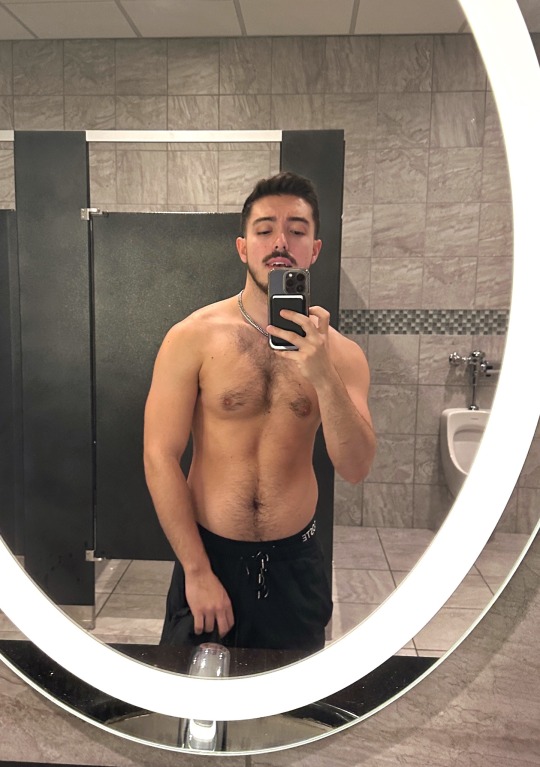
baby, don't get greedy (insta)
707 notes
·
View notes
Text
i don't rly care about what's going on with the mcu multiverse or the plot or whatever the only metric of quality wrt deadpool 3 is whether him and wolverine fuck nasty or not. they won't but disney had the potential to make the greatest movie of all time
#bisexual wolverine will win either way coz either he's bi (win) or i'll delude myself into thinking he's bi (win)#for the record i dont rly care abt him like that i dont need bi wolverine to win i just need disney to lose#plus bi wolverine already won in x-men 2: x2: x-men united (2003)#marvel#mcu#deadpool#deadpool 3#deadpool & wolverine#wolverine#james howlett#wade wilson#deadpool x wolverine#i hate tagging marvel there's so many sub categories. but i cant not
367 notes
·
View notes
Photo

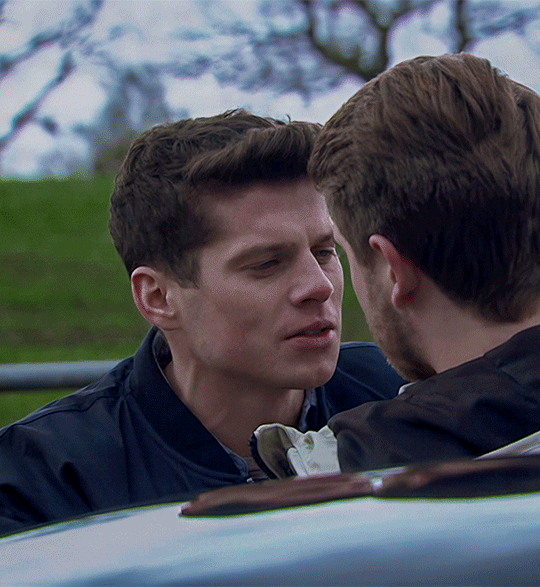
LEWIS COPE as Nicky Miligan & JOSH HORROCKS as 'Ally'
2023 • Emmerdale • 27.02.2023
#the kiss woz hot#the very moment i saw them meet i knew they woz fuckin#ally must be bi bc nicky got really jealous when he tried it on wit gabby [if that scene woznt a poor misdirection device]#plus i think his dad caleb miligan is also queer? -- bc hes always playing the pronoun game#hes always going on abt 'the people ive dated' or 'the people i date' etc#emmerdale#kiss#gay couple#ally x nicky#lgbtedit#lewis cope#nicky miligan#josh horrocks#gay#lgbt#romancegifs#queer#beautiful men#couple#intimacy#affection#longing#desire#amor#passion#romantic
1K notes
·
View notes
Text

okay, our boy has impeccable taste in men....
#OOF#i don't know how anyone in their right mind would say Lou is ugly#he is simply older?#(and we all know buck has some valid daddy issues)#plus he looks great today as well#anyway Buck has great taste and i know he will be beautifully man handled by this big strong man#lou ferrigno jr#tommy kinard#buck x tommy#bucktommy#911#911 abc#bi buck#edit/clarification: I NEVER WANTED TO EMPLY A 39 YEAR OLD MAN IS OLD. MIDDLE AGED MEN ARE NOT UGLY.#people (regardless of gender) can be hot at any age!#and Lou in particular is definitely hot at 39 as i am sure he will be at 49 and probably 59 etc
213 notes
·
View notes
Text

Join us at the 9th bi+ world meetup!
Let's meet, share our stories, keep in touch and build our bi+ network.
Bi+ people from all over the world are invited to join our low-key meet up. The meet up is organized using Zoom. We'll be using breakout rooms to give folks an opportunity to meet eacht other in a friendly & free setting! The meeting is in English.
Choose the meet up that best fits your time zone.
To accommodate people in various time zones, we will have TWO meetups:
- Friday, February 3, 2023 at 9 p.m. UTC
- Saturday, February 4, 2023 at 9 a.m. UTC
Bi+ people everywhere are invited to join either or both meetups on Zoom. We'll be using breakout rooms to give folks an oppurtunity to meet each other in a friendly & free setting. The meeting wil stay open behyond the 90 minute program. Feel free to continue your conversations during this open hangout time.
You can register via https://biplus.nl/biplus-world-meetup/
A few days before the event you will receive an email with the info about the Zoom session.
The Bi+ World Meet Up is organized by Bi+ Nederland (The Netherlands) and Robyn Ochs (U.S.). If you have any questions or comments, do not hesitate to contact us.
We'd love to meet you on February 3rd and/or February 4th!
#bi+ world meetup#bi#bisexual#bisexuality#bisexuals#bisexual community#bi+#bi plus#bi+ community#bi+ nederland
38 notes
·
View notes
Text
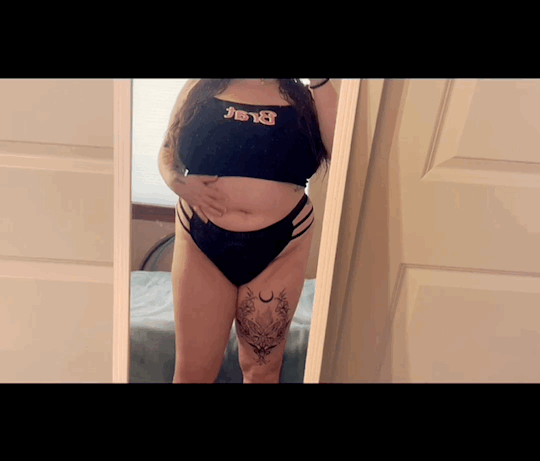
🖤brat🖤
#me#bass-alien#my posts#my content#bi girls#girls with tattoos#thigh tattoo#sleeve#black ink#girls with piercings#curvy#curvy women#curvy girls#plus size#plus size women#plus size girls#curvy chicks#curvy body#curvy brunette#curvy af#thicc#thick and curvy
1K notes
·
View notes
Text

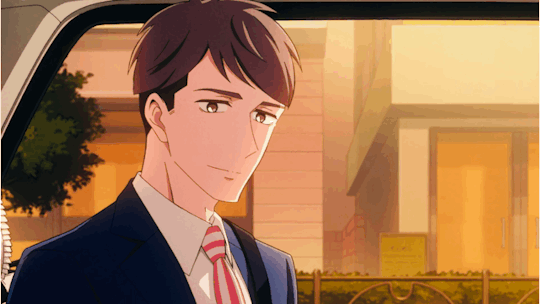


my new boss.. and roommate?! 🤍🍑
#momose sunohara#shirosaki yuusei#atarashii joushi wa do tennen#my new boss is goofy#THIS EP 😭💛😭💛😭💛😭#kinjo and momose confronting their past 🥹#the way kinjo is very casual about being bi (plus the whole title being ex boyfriend 😭)#MOMOSE AND SHIROSAKI ROOMATE.!?!?#the handhold mini momose and the way they both defended each other 😭 love them sm#the driver number 1 momoshiro supporter
400 notes
·
View notes
Text
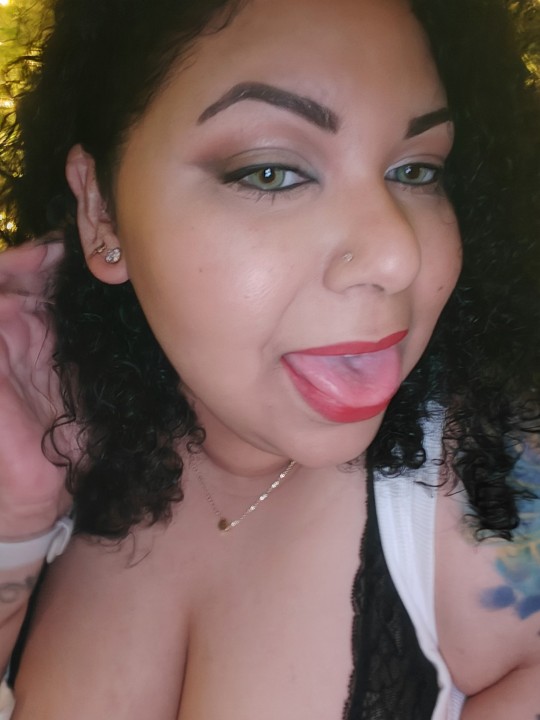



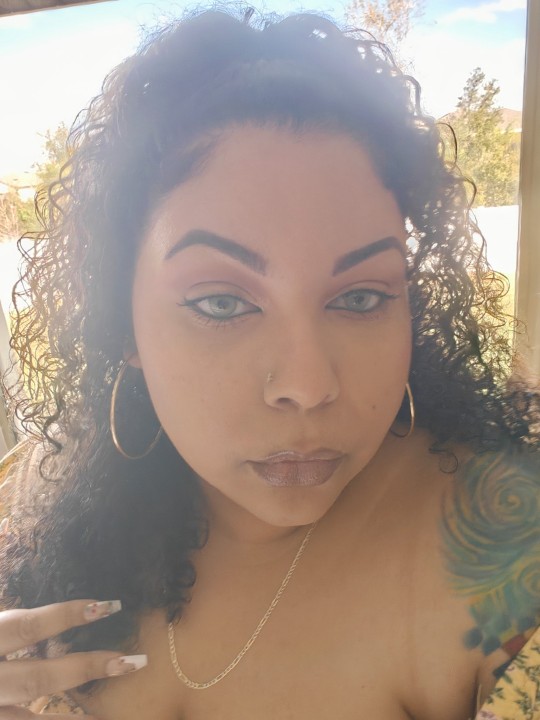

photo dump vol 4
137 notes
·
View notes
Photo


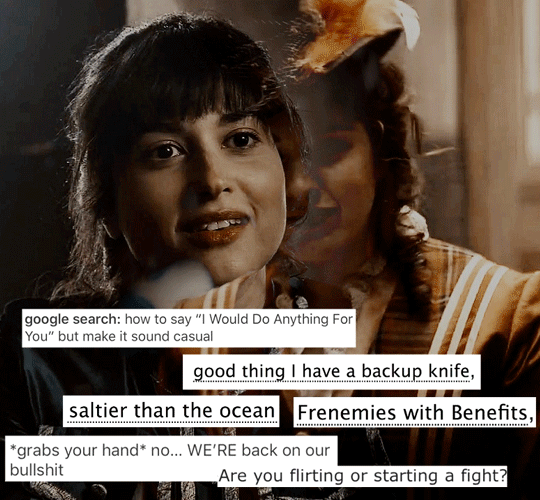
Nikolai/Zoya/Nina + text posts and tags
#sabedit#shadowandboneedit#shadowandbonecentral#nina zenik#nikolai lantsov#zoya nazyalensky#zoyalai#zoyanina#nikonina#nikolai x zoya x nina#my edits#this is so random#but i love zoyalai and i fell into zoyanina rabbit hole and can't get out#plus i think nikonia would be bi chaos and i live for that
530 notes
·
View notes
Text

can we take this off and get naked?
#bi nsft#nsft#nsft plus size#nsft girl#nsft pics#nsft concept#plus size nsft#bisexual#big tiddy gf#big tiddy committee#huge tiddies#mommy k!nk#domme mommy#mommy milkers#attention wh0r3#420 nsft
147 notes
·
View notes
Text
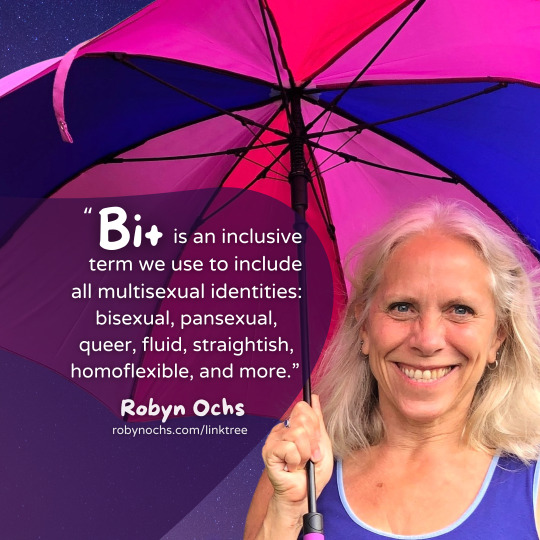
“Bi+ is an inclusive term we use to include all multisexual identities: bisexual, pansexual, queer, fluid, straightish, homoflexible, and more.” - Robyn Ochs
5 notes
·
View notes
Text
i personally think marcille is bisexual but in the "i am attracted the Occasional anime twink and also every woman who has ever walked the earth" way. like a solid 5 on the kinsey scale, y'know?
#eliot posts#(yes the kinsey scale is outdated and a vast oversimplification plus doesn't map perfectly onto modern label uses but. yk.)#dunme#dungeon meshi#marcille donato#i am only extrapolating a little bit from canon here#gestures at the succubus chapter#and then gestures at how the Vibes feel a little bit gay to me whenever she's interacting directly w almost any other adult woman#it's odd to me that i very rarely see ppl headcanon her as bi unless they are actively shipping her w a man (usually chilchuck or laios)#i personally ship her exclusively w falin (to me chilchuck is her work dad and laios is her boybestie and future in-law)#but she is simply bi and dating a woman to me#(now falin on the other hand i personally generally see as a lesbian)#(that ''she almost accepted toshiro's proposal bc she was worried no one else would want her. but hesitated because she felt guilty abt-#-the idea of marrying him even though she did not return his feelings'' read as compulsory heterosexuality to me personally)
85 notes
·
View notes